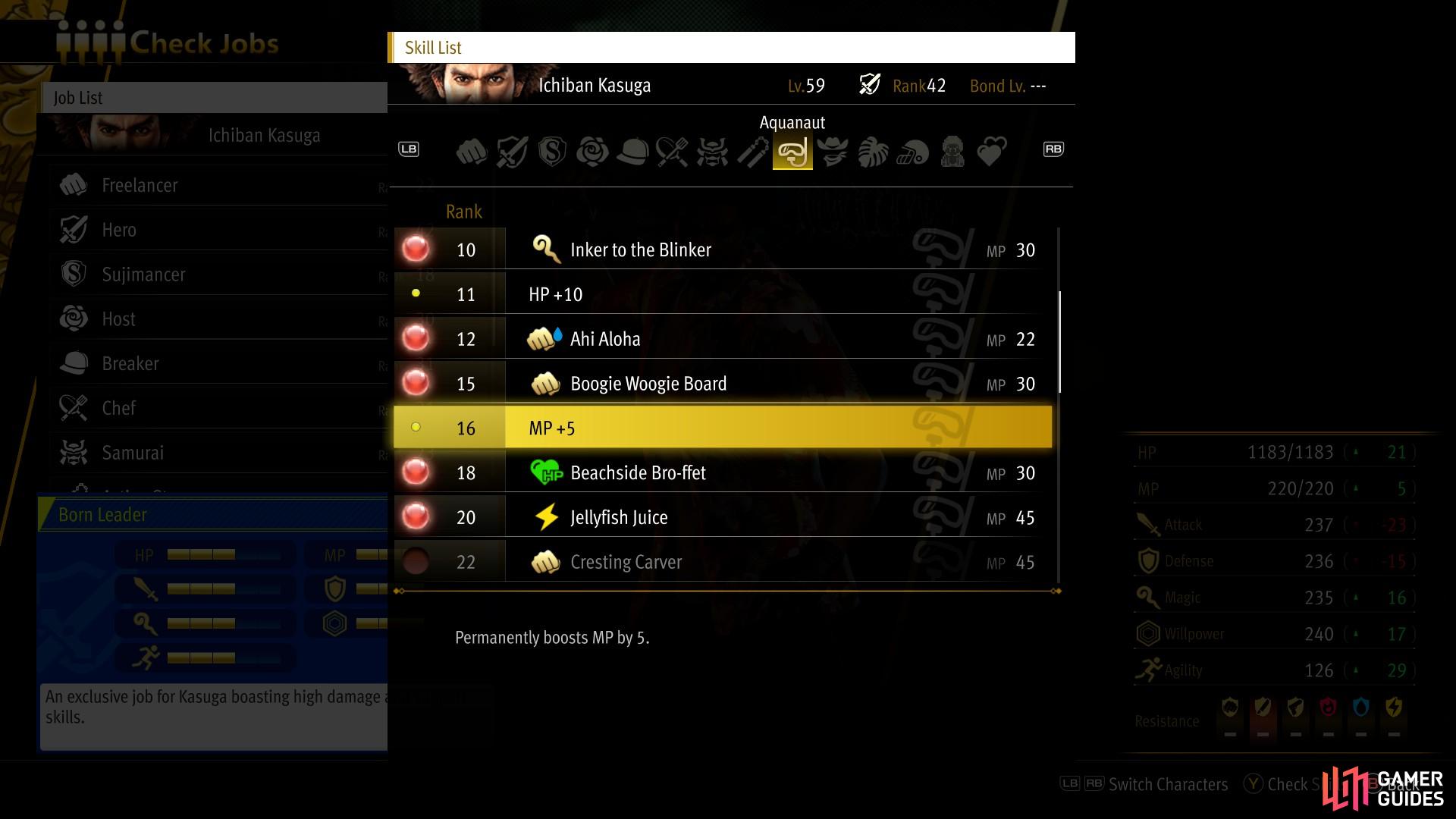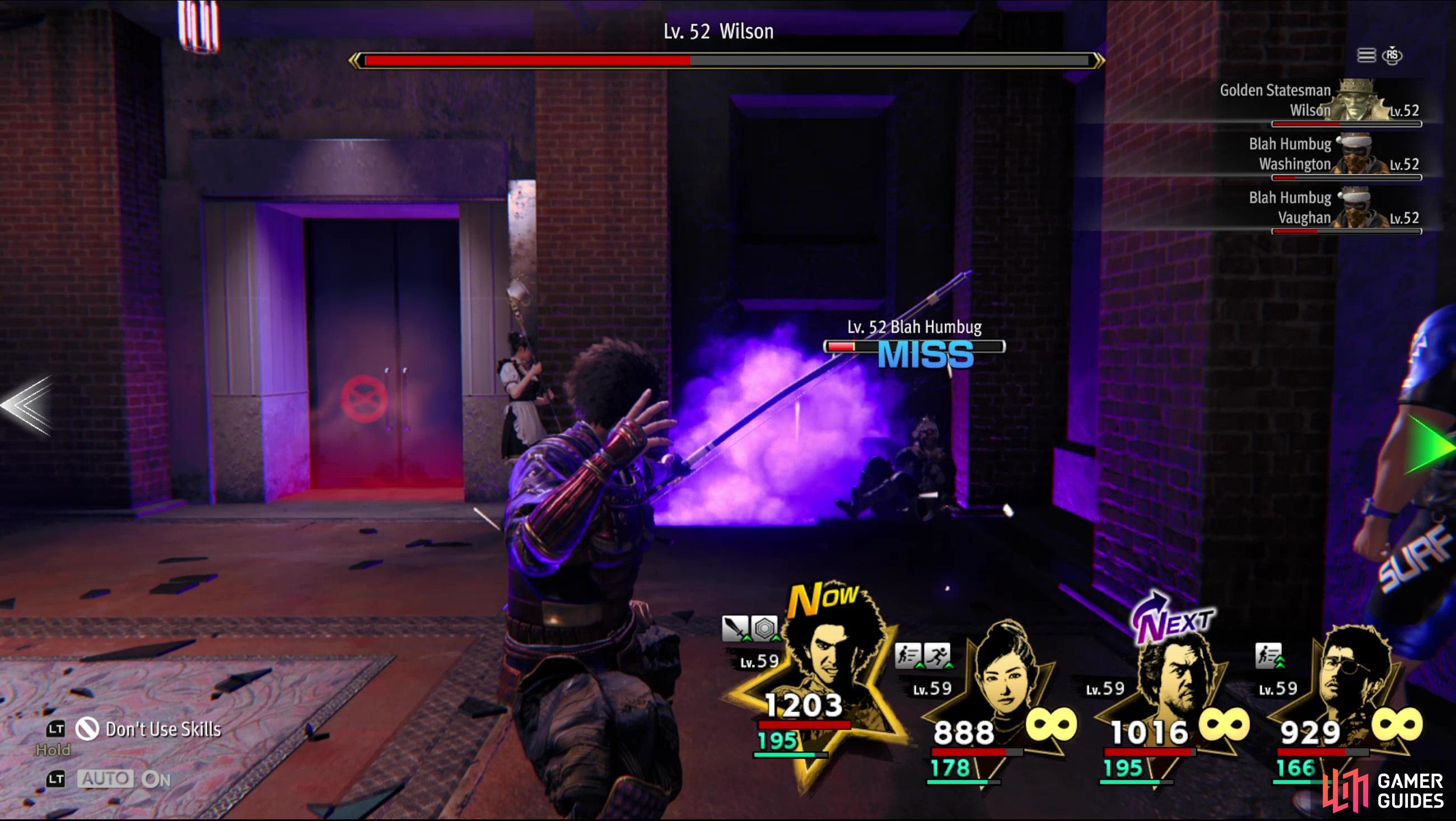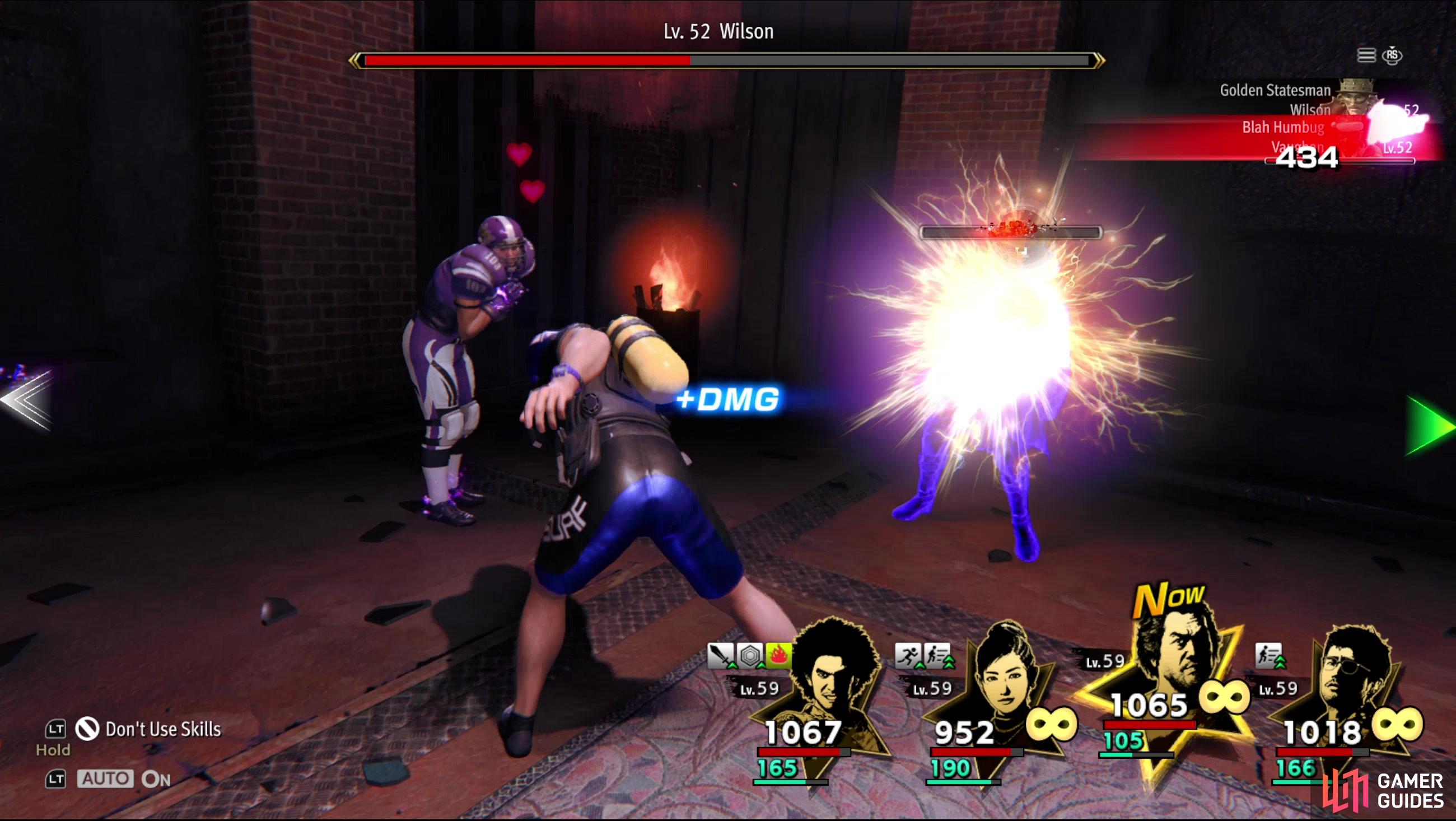Roleplaying games have arguably never been more popular than they are today, but some of this popularity is due to how stretched the definition of an RPG has become. Every game seems to have RPG elements these days, and even more insidious are the so-called “action” roleplaying games of distinguished pedigree that lack most of the accouterments that define RPGs. Fortunately for gamers everywhere, Like a Dragon: Infinite Wealth is no poser, featuring all the staples you’d expect of a robust RPG, including attack types, elemental damage, resistance, buff, debuffs and debilitations inflicted by various weapons and skills. This page will help you make sense of the various skills, damage types and debilitations in Like a Dragon: Infinite Wealth.
Skills are divided into two broad categories - physical and magic, with several damage subcategories further complicating matters - blunt, blade, gun, non-elemental, fire, water and electric.
Skill Types Explained - Infinite Wealth¶
Each character has an exclusive job (save for Ichiban, who has three exclusive jobs!) that determines their combat role and capabilities, and more jobs can be unlocked to diversify the skills characters have at their disposal. While different jobs feature different stat growths and weapons, their most impactful influence on gameplay is as a bundle of thematically related skills that helps delegate a character’s role in combat. Since you can inherit skills once they’ve been unlocked by increasing your Job Rank, there’s a lot of customization you can engage in, but it can be easy to overlook some of the nuance behind skills - something this page seeks to address.
There are several types of skills, each of which is denoted by the icon next to the skill’s name. You have physical skills that deal three different types of damage (blunt, blade and gun, denoted by a fist icon, a sword icon and a gun icon) and magic skills that deal either non-elemental magic damage (indicated by a staff icon) or water, fire or electric damage (indicated by a water drop, flame or lightning bolt icon, respectively). There are also hybrid physical-elemental skills that primarily count as physical attacks that also deal elemental damage. These skills will have the appropriate physical damage and elemental damage icon for the types of damage the attack deals - for example, the Samurai’s Burning Arrow skill has a gun icon with a small flame icon over the top of it, indicating it’s a physical (gun) attack that also deals elemental (fire) damage.
In addition, you have buffs and debuffs (indicated by a starburst in a circle with a green up arrow or red down arrow, respectively), the odd miscellaneous category skill that deals neither damage nor inflicts any buffs, debuffs or debilitations (marked by the same icon as the buff/debuff icon, but without any arrows), debilitation skills (these use a symbol to denote the debuff afflicted - some zzz’s for sleep, purple splatter for poison, etc.), healing skills (a green heart with the words HP in front) and revival skills (green heart with wings in front). Finally each job has two “ultimate” skills, which share the same iconic as other skills, but with a rainbow coloration.
(1 of 2) Physical attacks and hybrid physical-elemental attacks are fine for most enemies, but foes with high evasion might prove frustrating.
Physical attacks and hybrid physical-elemental attacks are fine for most enemies, but foes with high evasion might prove frustrating. (left), Against such enemies, switch to magic attacks to ensure that you strike true. (right)
How to Hit Enemies with High Evade - Physical vs Magic Attacks¶
Having access to numerous different types of skills that deal different sorts of damage is helpful for most of the game, and borderline necessary for the most dire late-game challenges Like a Dragon: Infinite Wealth can throw at you. The game is generous enough to inform you when an enemy is weak to something when you target them with the appropriate skill, so try out a range of options before you settle on anything.
Perhaps the most important thing you’ll notice in combat (especially if you pick fights with special enemies or delve into optional dungeons like the Hawaiian Haunt) is that some enemies are obnoxiously evasive. This is due to a hidden property of physical and magic attacks: physical attacks can be dodged, while magic attacks cannot. This includes hybrid physical-elemental skills like the aforementioned Burning Arrow - only pure magic attacks ignore an opponent’s evasion. Since hybrid physical-elemental attacks are affected by an enemy’s evasion, they can also be mitigated by inflicting Blindness, while magic attacks can only be prevented by Silence.
So if you’re ever having trouble hitting an enemy, try switching to magic attacks to gain a bit more consistency. If an enemy is primarily using physical attacks, try to blind them, and if an enemy is fond of magic skills, silence them.
For more information about jobs, check out the following pages:




 Sign up
Sign up

No Comments